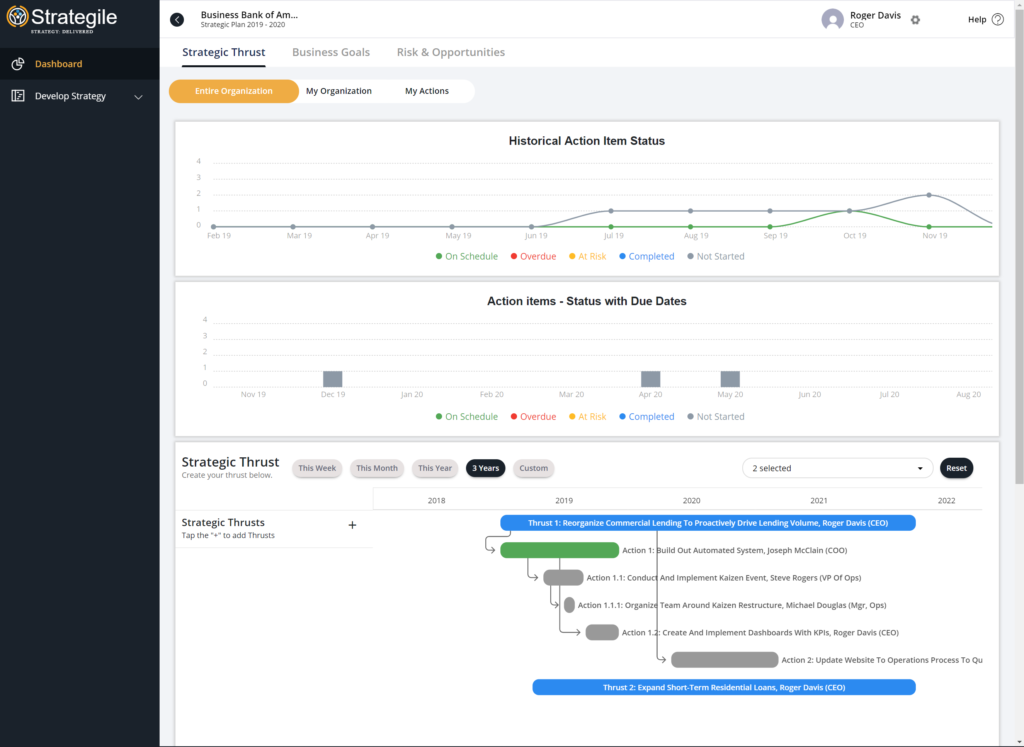Getting Started with Strategile
Developing a strategy can be challenging. Our goal is to assist the company’s leaders using a systematic and incremental approach to developing a strategy using a guided and visual approach.
If you need support along the journey, please contact us at the Performance Transformation Group using this form and a consultant will contact you.
If you haven’t already, download our Free “How to Build a Strategic Business Plan Checklist” that will assist the executive leadership team with accumulating all of the information necessary to complete each step.
OVERVIEW:
- The process of building a company’s strategy is additive, incremental and iterative. Strategile assists companies in developing a strategy using a phase based-approach where one step builds upon another.
- The goal is by Step 10, the executive team will have identified key observations that will form the foundation for 3-5 strategic thrusts that will propel the company over the next 24-48 months.
- They key is to complete approximately 75-80% of each step before moving to the next.
- Upon completion of each step, flip the upper right switch to “completed.” There’s also a note taking area to the left of the switch should you need to capture any notes along the way.

Step 1: Establish the organizational chart – start by adding only those who will develop and contribute to developing the plan who are typically executives (CxO, EVP/VPs). When the strategy, business goals and risk and opportunities have been identified, downstream contributes can be added and actions create or cascaded.
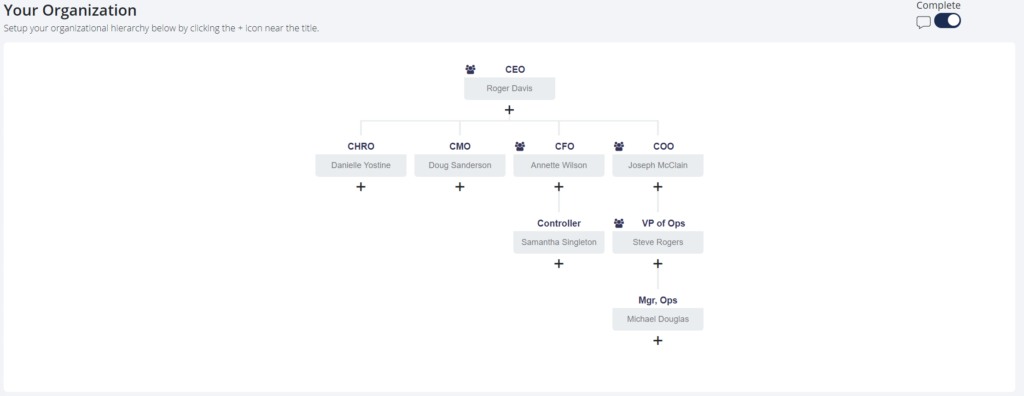
Step 2: Establish or Capture the Company’s Purpose including your Vision, Mission & Values.
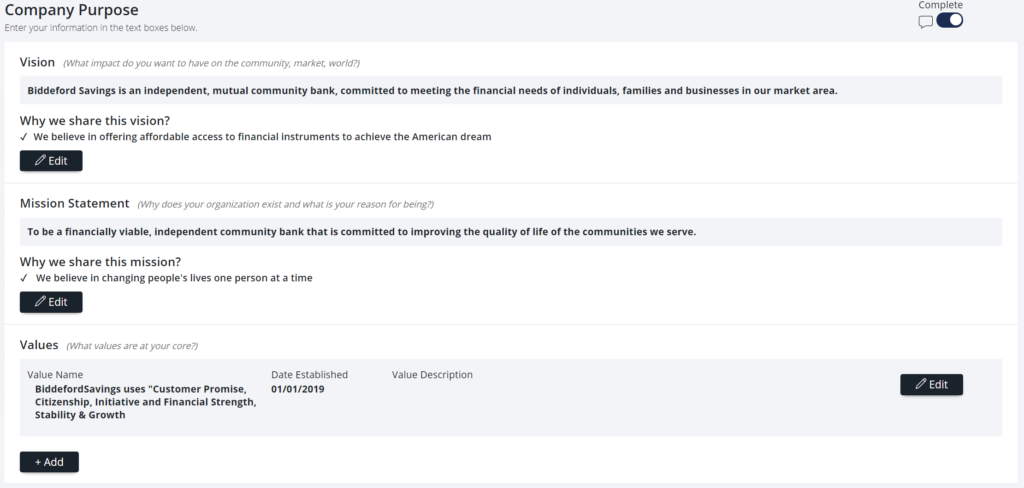
Step 3: Conduct the Market or Segment Analysis – which includes determining the company’s target market, size ($), historical growth (CAGR) and projected growth (CAGR). Next, identify market demands, gaps and responses. In other words, capture the market conditions and its direction by identifying when it started and how long its expected to continue.
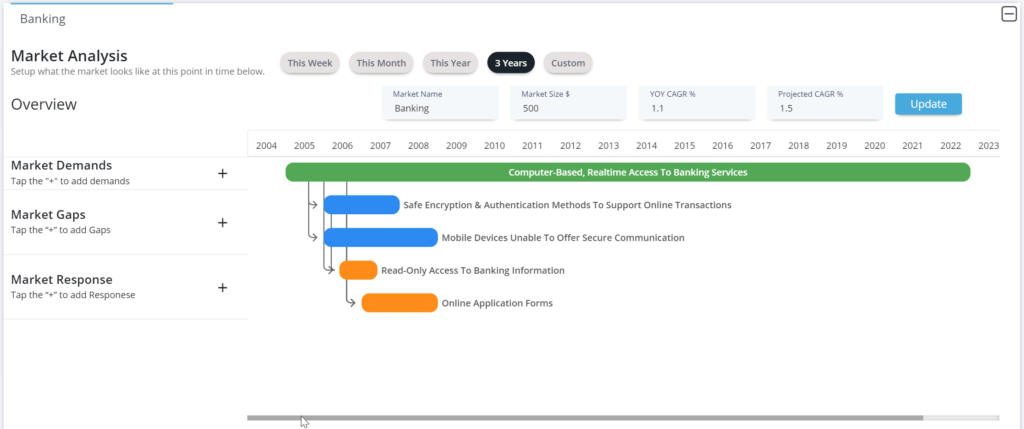
Step 4: Conduct the Market or Segment Analysis – similar to the Market Analysis, determine the multiple segments the company operates or is targeting along with its size ($), historical growth (CAGR) and projected growth (CAGR). Next, for each segment identify its demands, gaps and responses including the identification of when it started and how long its expected to continue.

Step 5: Conduct the Evaluation & Assessment – this entails evaluating each segment for its size, growth, margins, competition and risk as red, yellow or green (see hover-over definition) and whether its growing, flat or contracting. Then, evaluate your company (customer intimacy, applicable experience, solutions, people and scale/breadth) in the context of each segment. The company is evaluating its readiness or competitiveness within each previously identified segment.
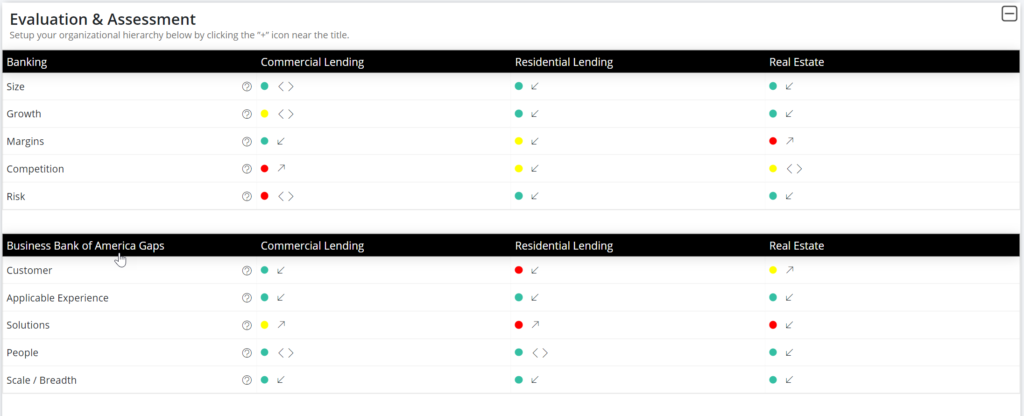
Step 6: Evaluate your Products & Services – capture all of your critical products and services. Focus on the company’s discriminators.

Step 7: Evaluate the Company’s Competitors – list the company’s key competitors, which markets and segments the company competes, which products and services the company competes against and the competitor’s key discriminators.
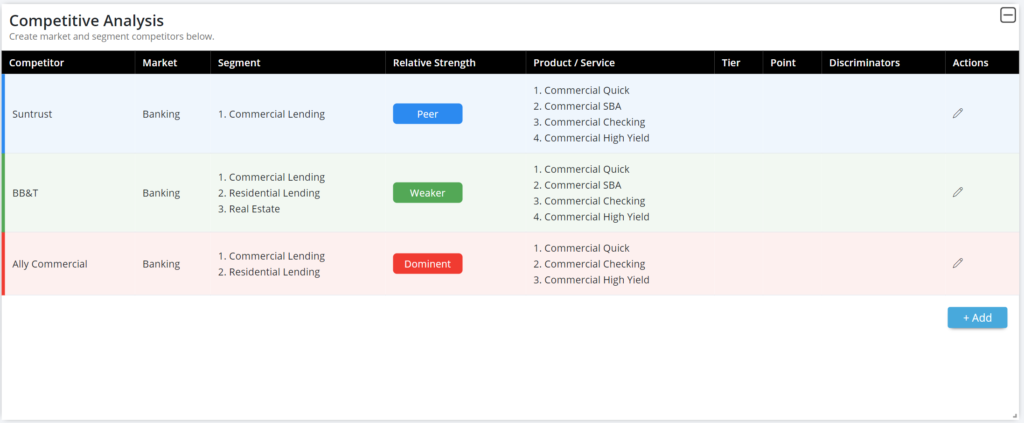
Step 8: Analyze the Company’s Strategic Partners – list the company’s key partners and how they deliver strategic or client value for the company’s clients.

Step 9: Conduct a PEST Analysis – PEST entails variables for which a company has no control (Political, Environmental, Social or Technological) and prioritize them from most to least important.

Step 10: Conduct a SWOT Analysis – SWOT entails variables for which a company has internal control (Strengths, Weaknesses, Opportunities or Threats) and prioritize them from most to least important.

Upon completion of Steps 1-10, dialog and debate critical observations and themes that represent challenges or opportunities in the context of the Company’s Vision and Mission.
Brainstorm 3-5 Strategic Thrusts or key strategies the company will undertake to drive growth or pivot the company over the next 24-48 months. Select an owner and downstream (cascaded) action owners.

Identify key Business Goals for the physical year by which the company and executives will be measured, an owner an downstream (cascaded) action owners.
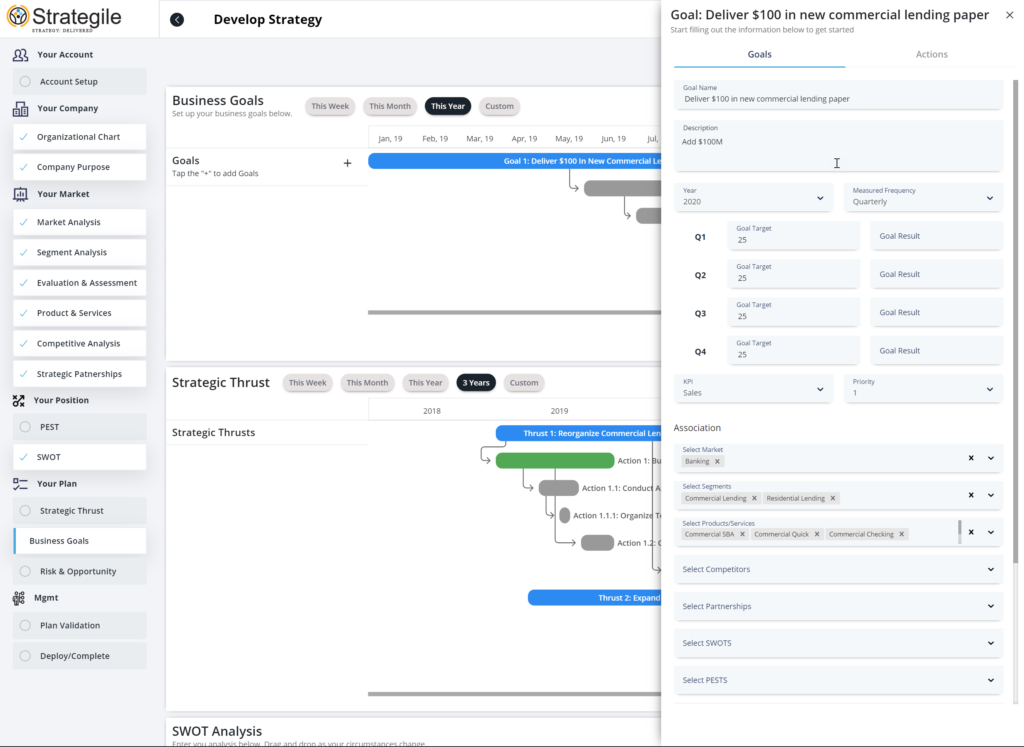
Identify 2-3 Risks and 2-3 Opportunities the company will mitigate or exploit (respectively) over the next 24-48 months, an owner and downstream (cascaded) action owners.
Validate the Plan – this process verifies whether each step has been started, addressed certain criteria and has been formally checked off as completed. If it the system displays anything other the Ready!, please revisit the step.
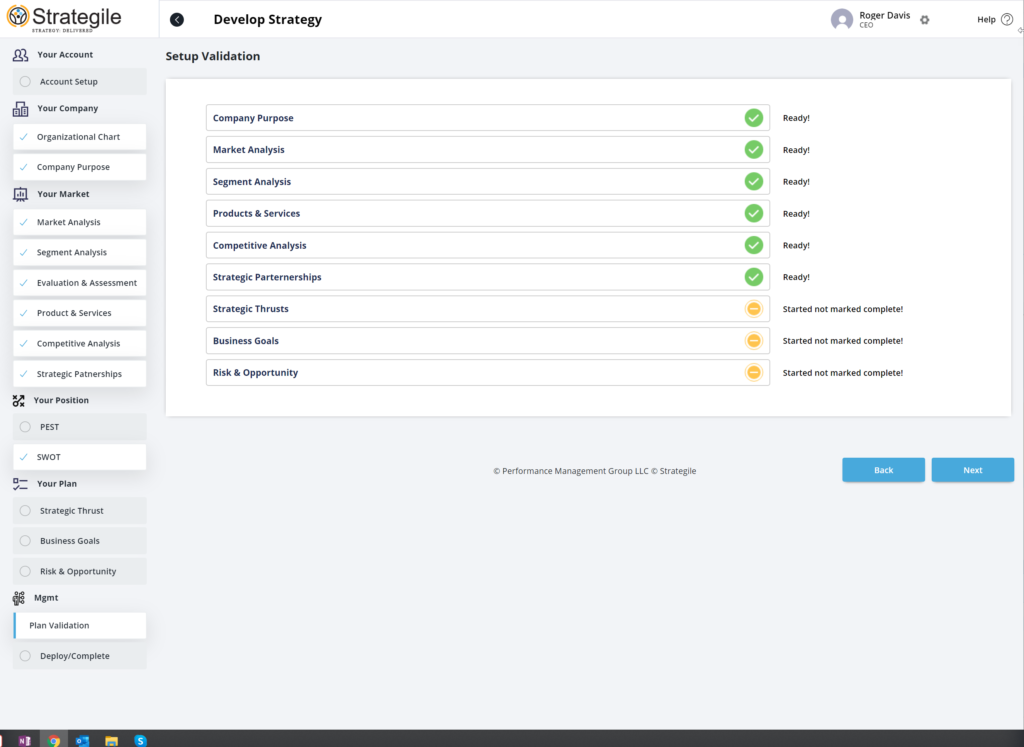
Deploy the Plan – this involves inviting all of the positions created in the organization chart to login and begin creating actions to support the Strategic Thrusts, Business Goals and Risk & Opportunities
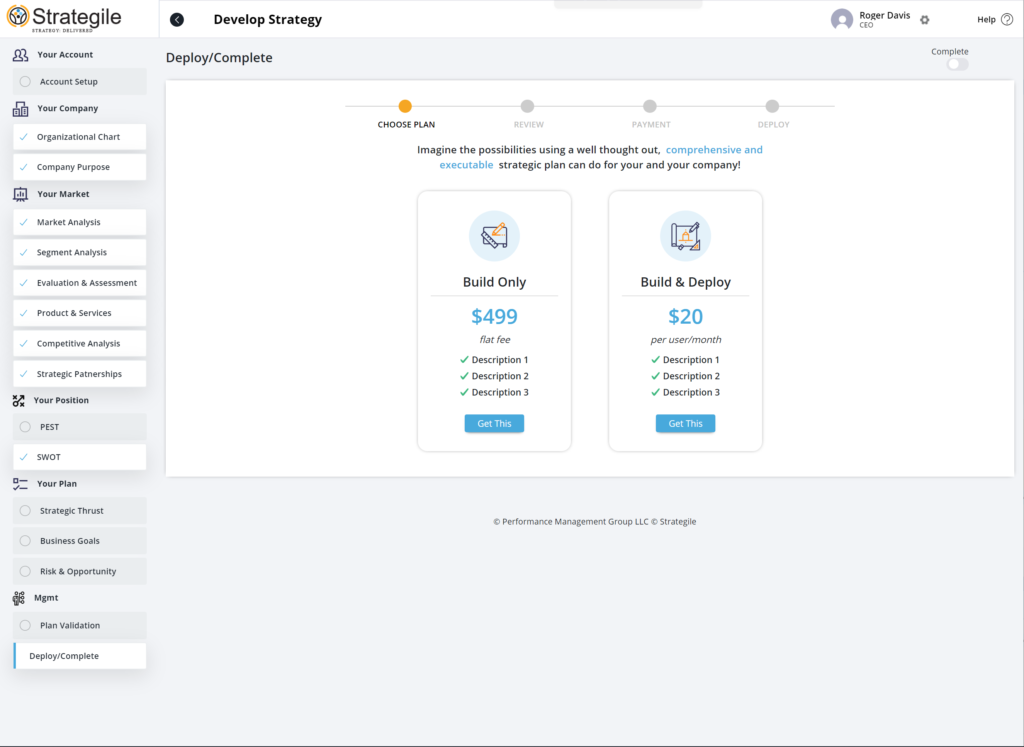
Status the Plan – each user who has an action or outstanding request to create an action will be sent a reminder on the 1st of every month to status their actions as on-schedule, at-risk and behind schedule.
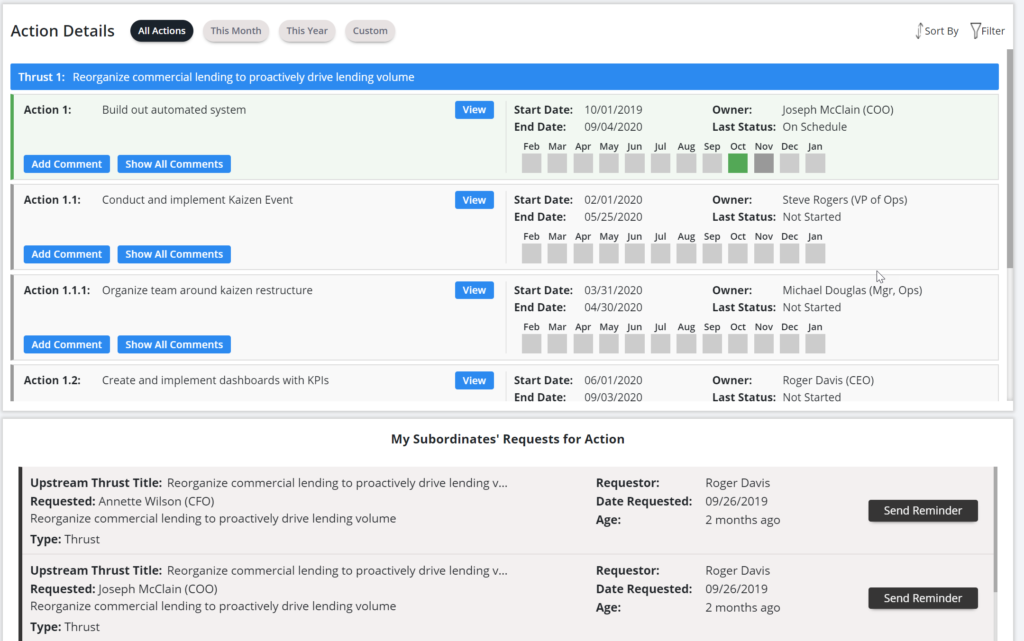
Manage the Plan – executives and leaders can login to the dashboard and see the status of the Strategic Thrusts, Business Goals, Risk & Opportunities, each action supporting the company’s initiatives and whether any outstanding Request for Actions remain open.
